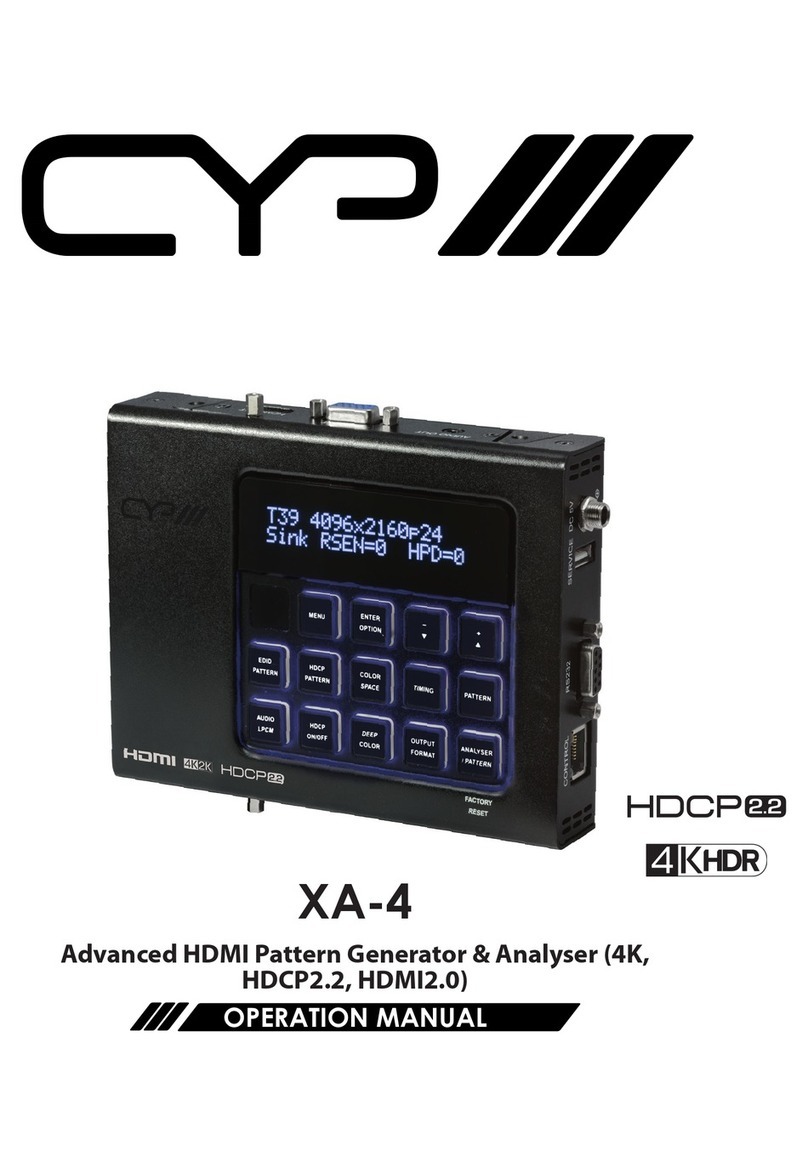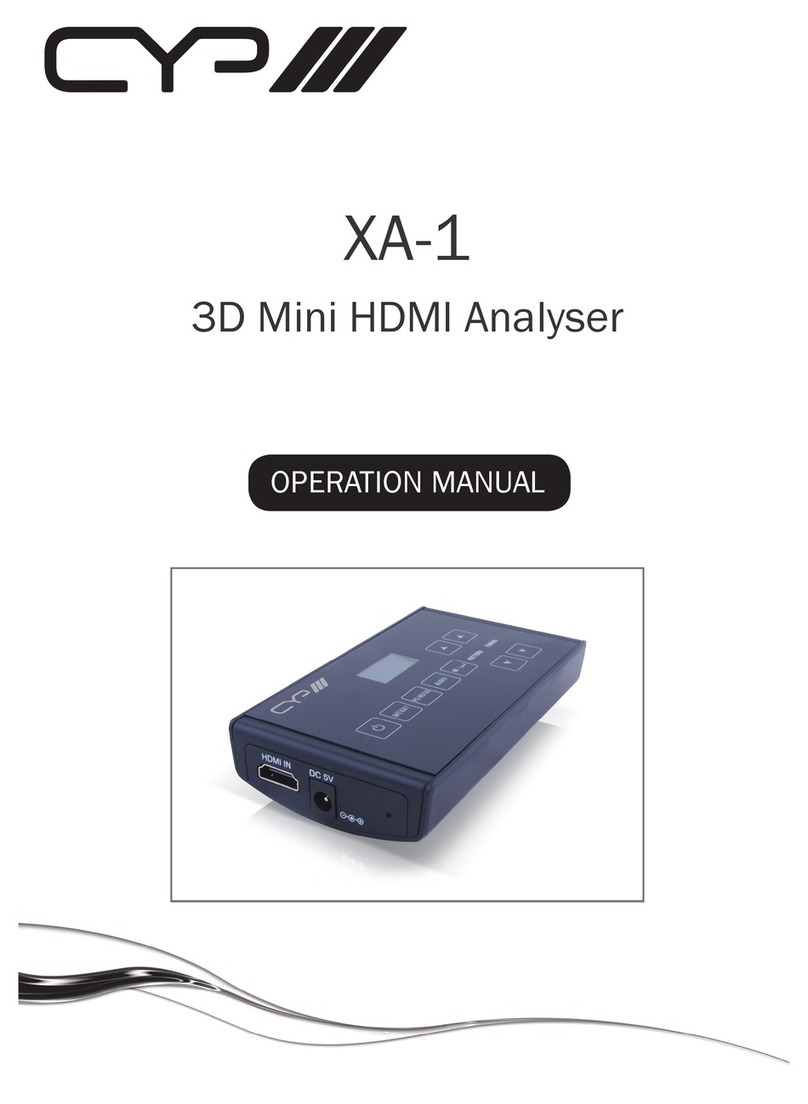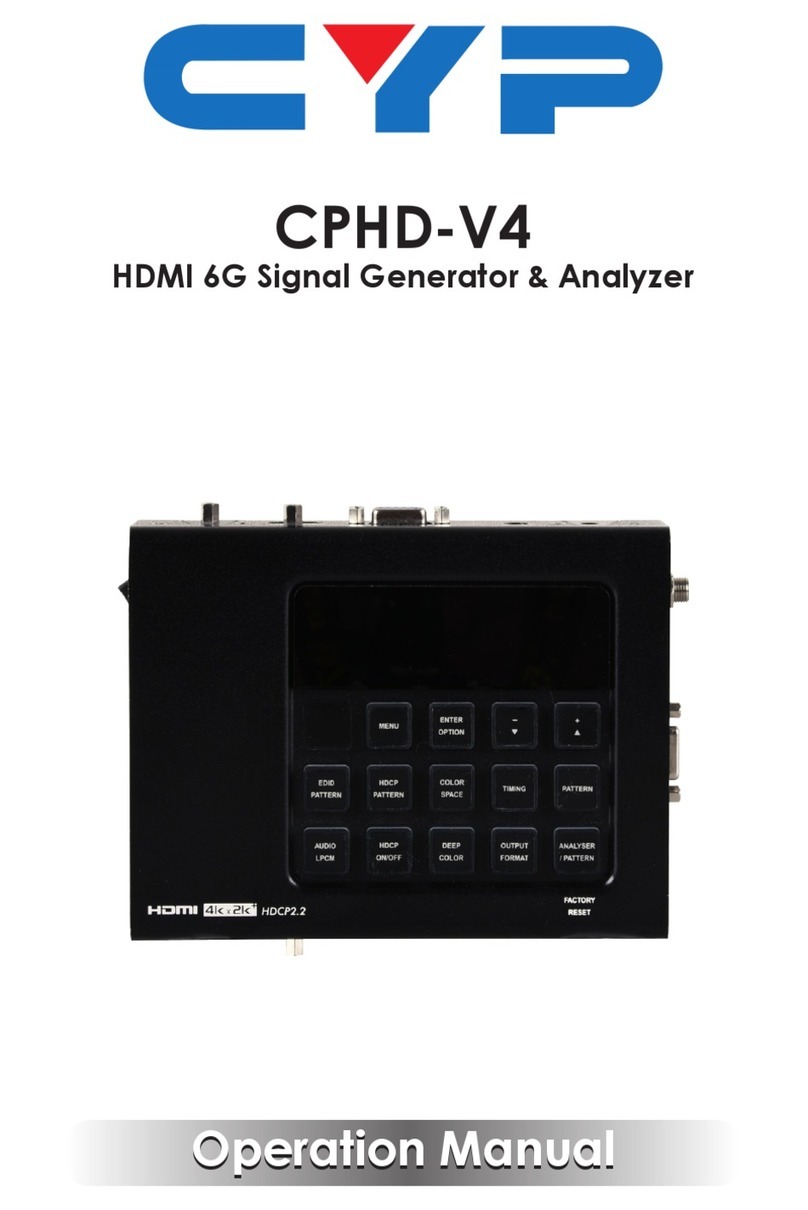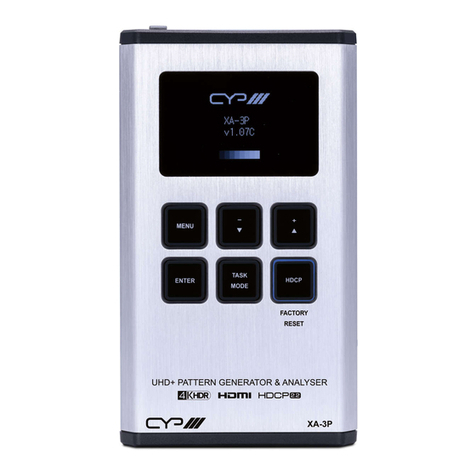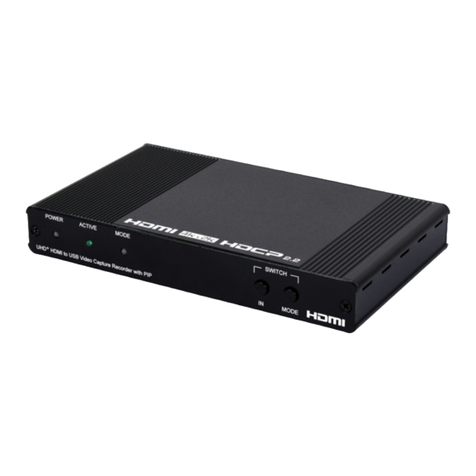
CONTENTS
1. Introduction..........................................................1
2. Applications .........................................................1
3. Package Contents ...............................................1
4. System Requirements.........................................2
5. Features................................................................2
6. Operation Controls and Functions ....................3
6.1 Front Panel......................................................3
6.2 Top Panel.........................................................5
6.3 Battery Compartment ......................................6
6.4 Serial via USB Defaults ...................................7
6.5 OLED Display..................................................8
6.5.1 Power Saving Mode ...............................8
6.5.2 Special OLED Icons ...............................8
6.6 OLED Menu.....................................................9
6.6.1 Analyzer Mode........................................9
6.6.2 Pattern Mode........................................21
6.6.3 Cable Test Mode ..................................34
6.7 Test Timings & Patterns.................................37
6.7.1 Resolution Support (Analyzer Mode) ...37
6.7.2 Resolution Support (Pattern Mode)......37
6.7.3 Test Patterns (Pattern Mode) ...............38
6.7.4 Audio Output Support (Pattern Mode)..41
6.8 Serial Commands..........................................42
7. Connection Diagram .........................................60
8. Specications ....................................................61
8.1 Technical Specications ................................61
8.2 Video Specications ......................................62
8.3 Audio Specications ......................................64
8.3.1 Digital Audio .........................................64
8.4 Cable Specications......................................65
8.5 Operational Notes..........................................66
9. Acronyms ...........................................................67












